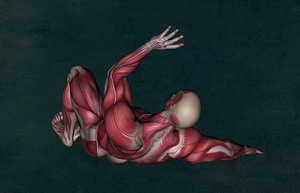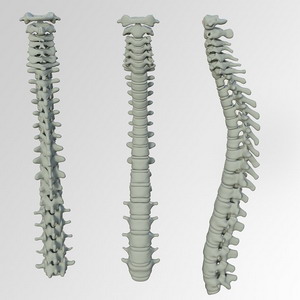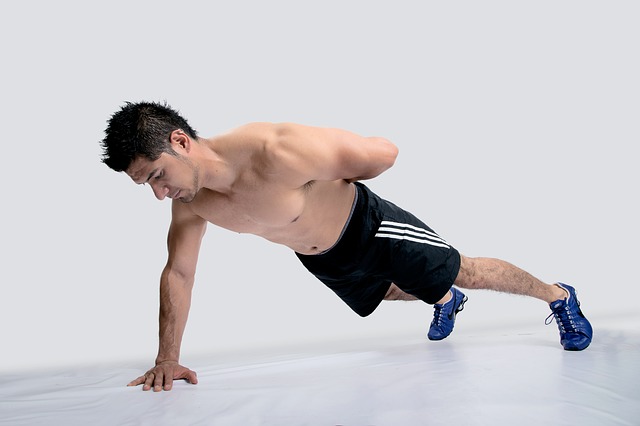 Last week I spent 12 hours in front of my computer taking a continuing education class on muscle rehabilitation. Zoom is a wonderful thing in small doses, but 12 hours is a bit longer than my posterior appreciates. The essence of the class revolved around a physiologic fact that I have appreciated in the context of injury recovery, but had not considered relative to normal daily muscle movement.
Last week I spent 12 hours in front of my computer taking a continuing education class on muscle rehabilitation. Zoom is a wonderful thing in small doses, but 12 hours is a bit longer than my posterior appreciates. The essence of the class revolved around a physiologic fact that I have appreciated in the context of injury recovery, but had not considered relative to normal daily muscle movement.
 Muscles have a great blood supply. As a consequence, you can rip a muscle and it will heal in a couple of weeks. Ligaments, which tie bones together, have almost no blood supply. When they get ripped, they will take three to six months to heal and often never heal completely. When I see a patient that has had an injury, my first concern is the nature of the injury. Slow lifting injuries or activity injuries generally involve muscle injury and will typically heal fairly quickly. Sudden impact injuries, like in auto accidents or falls, typically cause ligament injuries. The speed of the impact moves the body so fast the muscles don’t have time to react, so the movement jerks the bones around and tears up the ligaments holding everything together. These types of injuries take a long time to heal and often don’t resolve completely.
Muscles have a great blood supply. As a consequence, you can rip a muscle and it will heal in a couple of weeks. Ligaments, which tie bones together, have almost no blood supply. When they get ripped, they will take three to six months to heal and often never heal completely. When I see a patient that has had an injury, my first concern is the nature of the injury. Slow lifting injuries or activity injuries generally involve muscle injury and will typically heal fairly quickly. Sudden impact injuries, like in auto accidents or falls, typically cause ligament injuries. The speed of the impact moves the body so fast the muscles don’t have time to react, so the movement jerks the bones around and tears up the ligaments holding everything together. These types of injuries take a long time to heal and often don’t resolve completely.
 So, I have been aware of the utility of knowing whether muscle or ligament tissue is involved in injury situations. The doctor teaching the seminar was approaching this difference from a different angle. He was concerned with preventing injury in the first place and optimizing performance. He had spent many years working with Olympic teams trying to prevent injuries and improve performance, so his mindset revolved around doing lots of exercises to achieve these ends. Ten of the twelve hours of the seminar was actually showing us the moves of an exercise program he wanted us to teach to all our patients. That day he only taught levels 1 to 3 of 30 potential levels of fitness he teaches.
So, I have been aware of the utility of knowing whether muscle or ligament tissue is involved in injury situations. The doctor teaching the seminar was approaching this difference from a different angle. He was concerned with preventing injury in the first place and optimizing performance. He had spent many years working with Olympic teams trying to prevent injuries and improve performance, so his mindset revolved around doing lots of exercises to achieve these ends. Ten of the twelve hours of the seminar was actually showing us the moves of an exercise program he wanted us to teach to all our patients. That day he only taught levels 1 to 3 of 30 potential levels of fitness he teaches.
 The key concept he was teaching revolved around a simple concept – make sure that all the physical stress on your body in each moment is handled by your muscles and not your ligaments. If you overdo something and strain muscles, they will heal in a day or two. When you overdo something in a way that sprains ligaments, you are looking at a long healing period. So the training he was showing us was how to learn to brace your muscles to keep every joint in the middle of its range of motion. If you bend your arm halfway up and then pick up something really heavy, it is the arm muscles that will take the abuse. But if your arm is fully extended to the point that the ligament tension is being used to hold the joint steady, then it will be the ligaments that will suffer.
The key concept he was teaching revolved around a simple concept – make sure that all the physical stress on your body in each moment is handled by your muscles and not your ligaments. If you overdo something and strain muscles, they will heal in a day or two. When you overdo something in a way that sprains ligaments, you are looking at a long healing period. So the training he was showing us was how to learn to brace your muscles to keep every joint in the middle of its range of motion. If you bend your arm halfway up and then pick up something really heavy, it is the arm muscles that will take the abuse. But if your arm is fully extended to the point that the ligament tension is being used to hold the joint steady, then it will be the ligaments that will suffer.
 I remember years ago learning that even a small force applied to a ligament over a long time will injure it just as much as a big force for a short time. This is why you don’t lay on your stomach and twist your head to one side for a long time. Stretching any joint as far as it will comfortably go starts stretching the ligaments. For a few moments or minutes, this is no big deal. Doing this for hours can cause as much damage as being rear-ended by a big truck. This is what happens to the average American with a desk job. Did you know that in cultures that don’t sit but squat instead, there is no back pain problem? Seriously, they don’t have low back issues. This is because when you squat your back is kept in a neutral position, while when most people sit for more than a few minutes, they slouch. They let the low back muscles relax and let the spine bend to the point that the ligaments hold you up. This slowly damages the spinal ligaments and keeps me in business.
I remember years ago learning that even a small force applied to a ligament over a long time will injure it just as much as a big force for a short time. This is why you don’t lay on your stomach and twist your head to one side for a long time. Stretching any joint as far as it will comfortably go starts stretching the ligaments. For a few moments or minutes, this is no big deal. Doing this for hours can cause as much damage as being rear-ended by a big truck. This is what happens to the average American with a desk job. Did you know that in cultures that don’t sit but squat instead, there is no back pain problem? Seriously, they don’t have low back issues. This is because when you squat your back is kept in a neutral position, while when most people sit for more than a few minutes, they slouch. They let the low back muscles relax and let the spine bend to the point that the ligaments hold you up. This slowly damages the spinal ligaments and keeps me in business.
 I try to be aware of this in my own posture, but I am not very successful. Every time I stop thinking about it, I find that I have let my knees lock back to where they are being held steady by the knee ligaments, not the muscles. Every time I catch myself, I bend my knees just a bit, but I keep slipping back into my bad habits. The doctor teaching the seminar was promoting about an hour of daily exercises for building good postural habits. He felt that this should be as natural as brushing your teeth. The idea is good, but the main thought I had during the whole class was that nobody I know would do all that work every day. The concept of muscle loading and keeping the pressure off our ligaments is pure gold. It explains why it is important to observe proper lifting techniques and why we can’t sit so long. The challenge for me will be to figure out how to incorporate this concept when working with patients.
I try to be aware of this in my own posture, but I am not very successful. Every time I stop thinking about it, I find that I have let my knees lock back to where they are being held steady by the knee ligaments, not the muscles. Every time I catch myself, I bend my knees just a bit, but I keep slipping back into my bad habits. The doctor teaching the seminar was promoting about an hour of daily exercises for building good postural habits. He felt that this should be as natural as brushing your teeth. The idea is good, but the main thought I had during the whole class was that nobody I know would do all that work every day. The concept of muscle loading and keeping the pressure off our ligaments is pure gold. It explains why it is important to observe proper lifting techniques and why we can’t sit so long. The challenge for me will be to figure out how to incorporate this concept when working with patients.
 Another key concept he communicated is about how tied together the entire spine is. From his experience with high-level athletes, he knew that a weakness in any one area of the spine would trigger a failure in some other area of the spine. Understanding this forever is why I always adjust the entire body, not just the area that hurts. Poor biomechanics in your neck may be the cause of your low back pain, even though you don’t feel any pain in your neck. The spine acts as a single unit, and poor movement anywhere can cause joint failure elsewhere. As a consequence, it becomes important when attending to bracing your core abdominal muscles and pelvic muscles to stabilize your low back to consider the rest of your spine. You also have to pay attention to your midback and your neck positions. The goal is to keep the three areas in a neutral position with muscle bracing. Neutral means a position that is about halfway between the most extended position and the most flexed position.
Another key concept he communicated is about how tied together the entire spine is. From his experience with high-level athletes, he knew that a weakness in any one area of the spine would trigger a failure in some other area of the spine. Understanding this forever is why I always adjust the entire body, not just the area that hurts. Poor biomechanics in your neck may be the cause of your low back pain, even though you don’t feel any pain in your neck. The spine acts as a single unit, and poor movement anywhere can cause joint failure elsewhere. As a consequence, it becomes important when attending to bracing your core abdominal muscles and pelvic muscles to stabilize your low back to consider the rest of your spine. You also have to pay attention to your midback and your neck positions. The goal is to keep the three areas in a neutral position with muscle bracing. Neutral means a position that is about halfway between the most extended position and the most flexed position.
 Sitting really is killing us. A few years back statisticians calculated that having a desk job reduces our lifespan as much as smoking. Low back pain is the number one complaint of pain among all Americans because of this. For years this low back problem has competed with neck pain because of the creation of the computer monitor. Everyone seems to feel they need to try to touch the screen with their nose while they are working. But since the age of pandemic introduced us to working from home, these problems have now been amplified. For some reason, the computer of choice for the work-at-home crowd is a laptop balanced on their knees. The last 30 years of work ergonomics science that has developed the optimal positions for reducing spinal and eye stress at the workplace desktop has been completely forgotten. A laptop on your knees or on the coffee table by the couch is truly terrible for you. Now the midback is being ruined as well. The shoulders roll forward as you hunch forward to work. I have been seeing a rash of shoulder problems as well as tingling and numbness in my patient’s hands. This is not carpal tunnel, this is primary impingement of the spinal neck nerves at the spine and in the shoulder. We are letting the ligaments of the spine keep us upright instead of the spinal muscles.
Sitting really is killing us. A few years back statisticians calculated that having a desk job reduces our lifespan as much as smoking. Low back pain is the number one complaint of pain among all Americans because of this. For years this low back problem has competed with neck pain because of the creation of the computer monitor. Everyone seems to feel they need to try to touch the screen with their nose while they are working. But since the age of pandemic introduced us to working from home, these problems have now been amplified. For some reason, the computer of choice for the work-at-home crowd is a laptop balanced on their knees. The last 30 years of work ergonomics science that has developed the optimal positions for reducing spinal and eye stress at the workplace desktop has been completely forgotten. A laptop on your knees or on the coffee table by the couch is truly terrible for you. Now the midback is being ruined as well. The shoulders roll forward as you hunch forward to work. I have been seeing a rash of shoulder problems as well as tingling and numbness in my patient’s hands. This is not carpal tunnel, this is primary impingement of the spinal neck nerves at the spine and in the shoulder. We are letting the ligaments of the spine keep us upright instead of the spinal muscles.
 So what should we do? When standing, roll your hips as far under and forward as you can then backward arching your back. Now find halfway between these positions – this is the neutral spot we are looking for. Let your shoulder blades slide back and down toward your tailbone. This should raise your chest upward. Now flex your neck forward and back and find the center point halfway between. Let your shoulders drop back and down and the neck should naturally lift up and back to a comfortable position. When you sit you want to reproduce these same movements in your spinal position. You will notice that when your shoulder blades drop back and down and the neck elongates and falls back to center over the body that you can’t really see a laptop sitting on your lap. A laptop is a bad idea. Don’t put them on your lap. In fact, there is no way to use a laptop ergonomically as they are built. The best adaptation you can make is to buy a separate keyboard and not use the one connected to the screen. Put the laptop screen up high enough that when you are in the position described above your eyes will stare right at the middle of the screen without bending down at all.
So what should we do? When standing, roll your hips as far under and forward as you can then backward arching your back. Now find halfway between these positions – this is the neutral spot we are looking for. Let your shoulder blades slide back and down toward your tailbone. This should raise your chest upward. Now flex your neck forward and back and find the center point halfway between. Let your shoulders drop back and down and the neck should naturally lift up and back to a comfortable position. When you sit you want to reproduce these same movements in your spinal position. You will notice that when your shoulder blades drop back and down and the neck elongates and falls back to center over the body that you can’t really see a laptop sitting on your lap. A laptop is a bad idea. Don’t put them on your lap. In fact, there is no way to use a laptop ergonomically as they are built. The best adaptation you can make is to buy a separate keyboard and not use the one connected to the screen. Put the laptop screen up high enough that when you are in the position described above your eyes will stare right at the middle of the screen without bending down at all.
 This same posture applies to any activity you do. The neutral head/neck, midback, and low back positions allow your muscles to do all the work and not put a strain on your ligaments. You will find that you need to take breaks every 20 to 30 minutes to rest and stretch your muscles. Switching to using your muscles will feel like a lot of work at first, but the payoff is in preventing the degeneration of your spinal joints that make you old before your time. Letting your ligaments hold you up pinches the joints and creates the inflammation that results in what is called spinal arthritis.
This same posture applies to any activity you do. The neutral head/neck, midback, and low back positions allow your muscles to do all the work and not put a strain on your ligaments. You will find that you need to take breaks every 20 to 30 minutes to rest and stretch your muscles. Switching to using your muscles will feel like a lot of work at first, but the payoff is in preventing the degeneration of your spinal joints that make you old before your time. Letting your ligaments hold you up pinches the joints and creates the inflammation that results in what is called spinal arthritis.
 We don’t like to admit it, but the little things we do to our bodies day in and day out make a big difference in how we feel. These poor posture habits we have gotten into make us old and cranky before our time. Good posture is for a reason – to prevent arthritis. It takes effort and it takes time. But if you want to feel better and enjoy your life as you age, the effort is worth it.
We don’t like to admit it, but the little things we do to our bodies day in and day out make a big difference in how we feel. These poor posture habits we have gotten into make us old and cranky before our time. Good posture is for a reason – to prevent arthritis. It takes effort and it takes time. But if you want to feel better and enjoy your life as you age, the effort is worth it.
Take care,
David
